Even with its reputation for being gritty and busy, visitors continue to flock to France’s port city of Marseille, and with good reason. Few know what to expect from this multicultural city on the Mediterranean coast before visiting. What they find in Marseille is a complex place bursting with history and character that is bound to win you over.
The trick to seeing what makes Marseille so special is to arrive prepared. Taking a look at a Marseille itinerary like this one will ensure you know how to make the most of your visit. With our itinerary as a guide, you can spend as few as 2 days exploring the city and feel confident that you’ve not missed out on any of the best places to visit in Marseille. So if you want to leave it pleasantly surprised, here’s what to do in Marseille in 2 days.
Best Time to Visit Marseille
To really enjoy your 48 hours in Marseille, it’s wise to take into account the best time of year to visit. Both weather and tourist numbers can affect how much you enjoy the city and its sights, so the timing of your trip matters greatly.
For instance, summer in Marseille means hot, dry weather and crowds at their peak, which makes it far from ideal. Instead, the best time to visit Marseille is widely regarded to be the months following summer, namely September to November. These autumn months, as well as the spring months of April and May, offer pleasant sightseeing weather but with fewer tourists and more affordable rates on hotels. As for wintertime, while Marseille remains warmer than other parts of France, it is still cool and rainy.
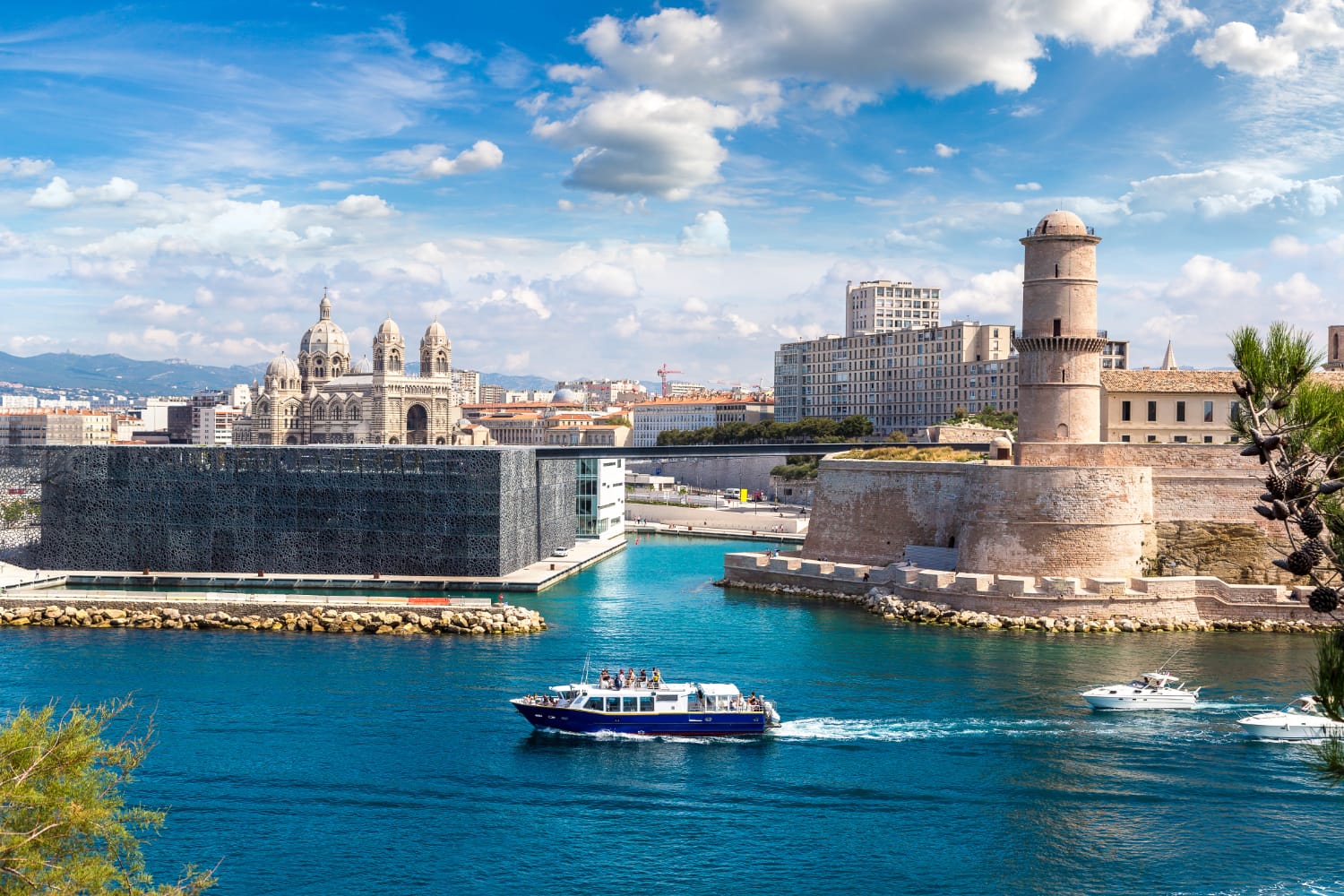
How to Get Around Marseille
When visiting Marseille, it’s important to understand the best ways to get around the city. Although some attractions are conveniently located close together, walking won’t always be the best option, especially on Day 2 of this itinerary. Therefore, it’s wise to become familiar with Marseille’s public transport network, which includes metro, trams, and buses.
There are two lines each of the metro and tram, which can limit their usefulness. Buses, on the other hand, make up the bulk of the network, covering the city fully. Tickets are shared across the networks, with a single-journey ticket costing €1.70 and lasting an hour. While a ticket covers connections, it may only be used for one metro journey. Tickets can be bought in metro stations, at tram stops, and on board buses.
Another great way for tourists to get around is with a hop-on hop-off bus. An all-day ticket allows you to hop off and back on at any of the many scheduled stops and explore Marseille at your own pace. The bus also includes an informative audio guide that provides commentary on the main attractions. You can buy your hop-on and hop-off bus ticket here.
It’s also important to know that you have options when going to and from the Marseille Airport. The Airport is 27km from the city, and you have the choice of a shuttle bus or train to get you there. Frequent shuttle buses run to the main train station of Marseille Gare St. Charles, take 30 minutes, and cost €8.30. Alternatively, the train costs €5.10 and takes 23 minutes, but you’ll first need to ride the free shuttle bus from the airport to Vitrolles Aeroport train station.
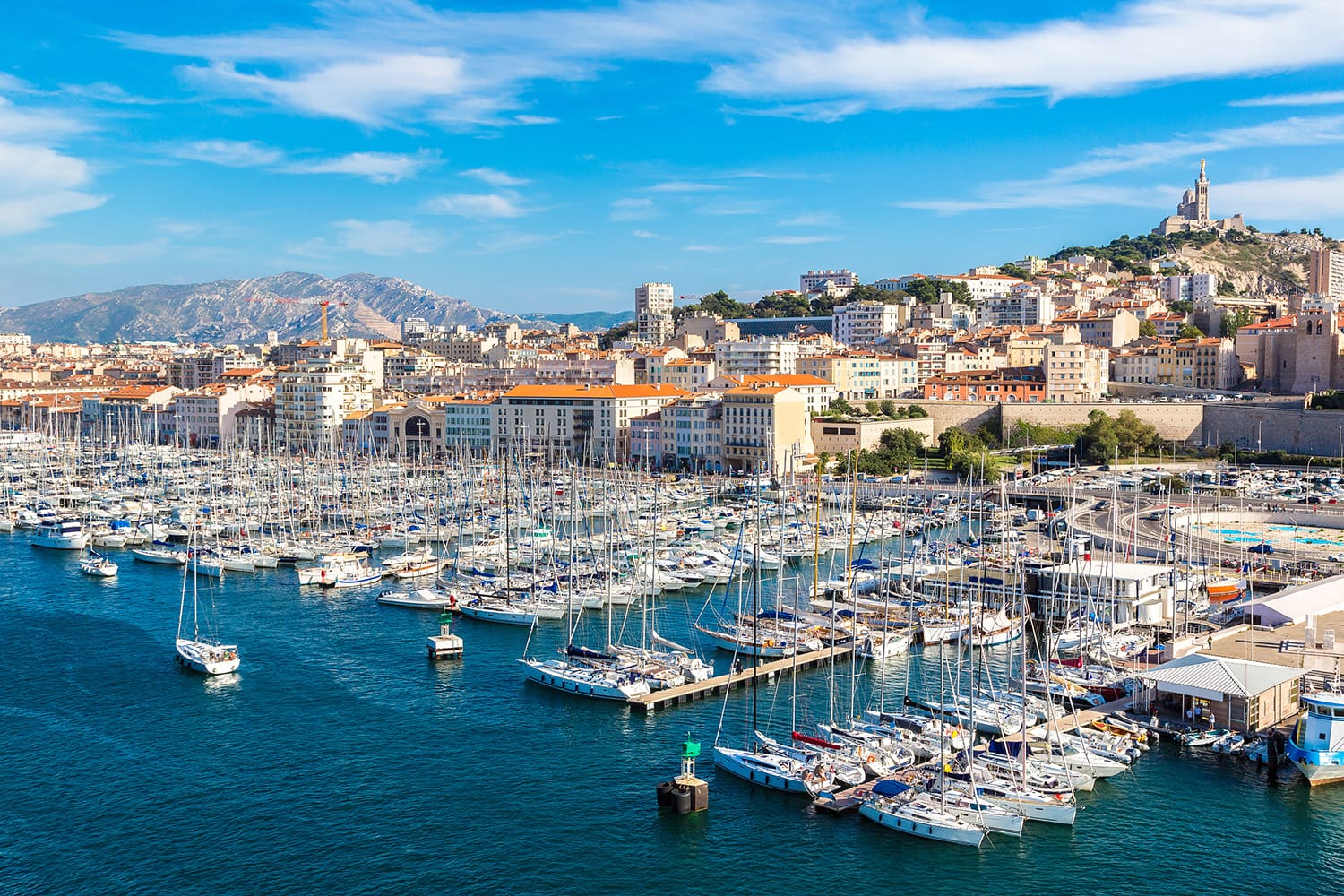
Where to Stay in Marseille
To make the most of your time, you’ll want to give some thought to where to stay in Marseille. Picking accommodation that is good value in the right part of the city can have a bigger impact on your visit than you might realize. The easier it is to go sightseeing and find places to eat and unwind, the more enjoyable your trip will be. Ultimately, the best places to stay in Marseille will be as close to the Old Port as possible, or somewhere with good public transport connections.
For a truly special experience in Marseille, there’s no better choice than the InterContinental Marseille – Hotel Dieu. This stunning five-star hotel is set inside a historic building, just up from the Old Port, making it perfectly located in the city. Guests can treat themselves with two gourmet restaurants, a spa, an indoor pool, and a gym.
If you’re looking for the kind of facilities you’re used to at home, you’ll want to stay somewhere like Staycity Aparthotels Centre Vieux Port. These studios and apartments come with cooking facilities and a good amount of space, and the location puts you between the main train station and the Old Port.
Another approach to consider for affordable and comfortable accommodation is Airbnb. For recommendations, take a look at our list of the best Airbnbs in Marseille.
In terms of budget options, your best bet is Hostel Vertigo Vieux-Port. Found just south of the Old Port and in a nice area, this recently renovated hostel benefits from friendly staff and a shared kitchen.
For more accommodation options in Marseille check out Booking.com. The company continuously offers the best rates, and its custom service is on point.
The Perfect 2-Day Marseille Itinerary
As one of France’s largest cities and a major tourist destination, you’ll have no trouble entertaining yourself for a couple of days in Marseille. To experience the best of Marseille means spending quite a bit of time down by its central port and the historic neighborhoods it has supported for centuries. However, to experience the best things to do in Marseille, you’ll also want to visit other neighborhoods and districts, from elegant Cinq-Avenues to the hilly Saint Victor. And let’s not forget the cluster of islands just off the coast that includes the dramatic Château d’If.
However, before we get to our Marseille itinerary, we just wanted to remind you to purchase travel insurance. You never know what will happen and, trust us, you do not want to get stuck with thousands of dollars in medical bills. As a wise man once said, “If you can’t afford travel insurance, you can’t afford to travel.” So don’t leave home without it.
SafetyWing offers travel insurance for only about $10 a week, making it a no-brainer to get. You can get a quick, non-binding quote below:

SafetyWing is, of course, not the only option available. Two other popular alternatives are World Nomads and Heymondo.
Getting back to our Marseille travel itinerary, it’s time to dive in and look at all the interesting places you can discover with 2 days in Marseille.
Marseille Itinerary: Day 1
Arriving in the city, head straight down to the waterfront and the many attractions found in and around the Le Panier neighborhood.
Old Port
Rather than having a main square as its geographic and symbolic center, Marseille has the Old Port. A vast marina full of boats and almost completely surrounded by buildings and fortifications, the Old Port has always been vital to the city. While it has become more pedestrian-friendly in recent years, the area still retains much of its old-fashioned character.
Head down to the Fish Market at the end of the port where fishermen still sell their fish each morning. The market square has a few modern touches as well, like the large observation wheel or the large canopy structure with a reflective roof. After having seen the market, take a stroll along the northern side of the harbor and gaze out across the hundreds of masts that fill the Old Port.
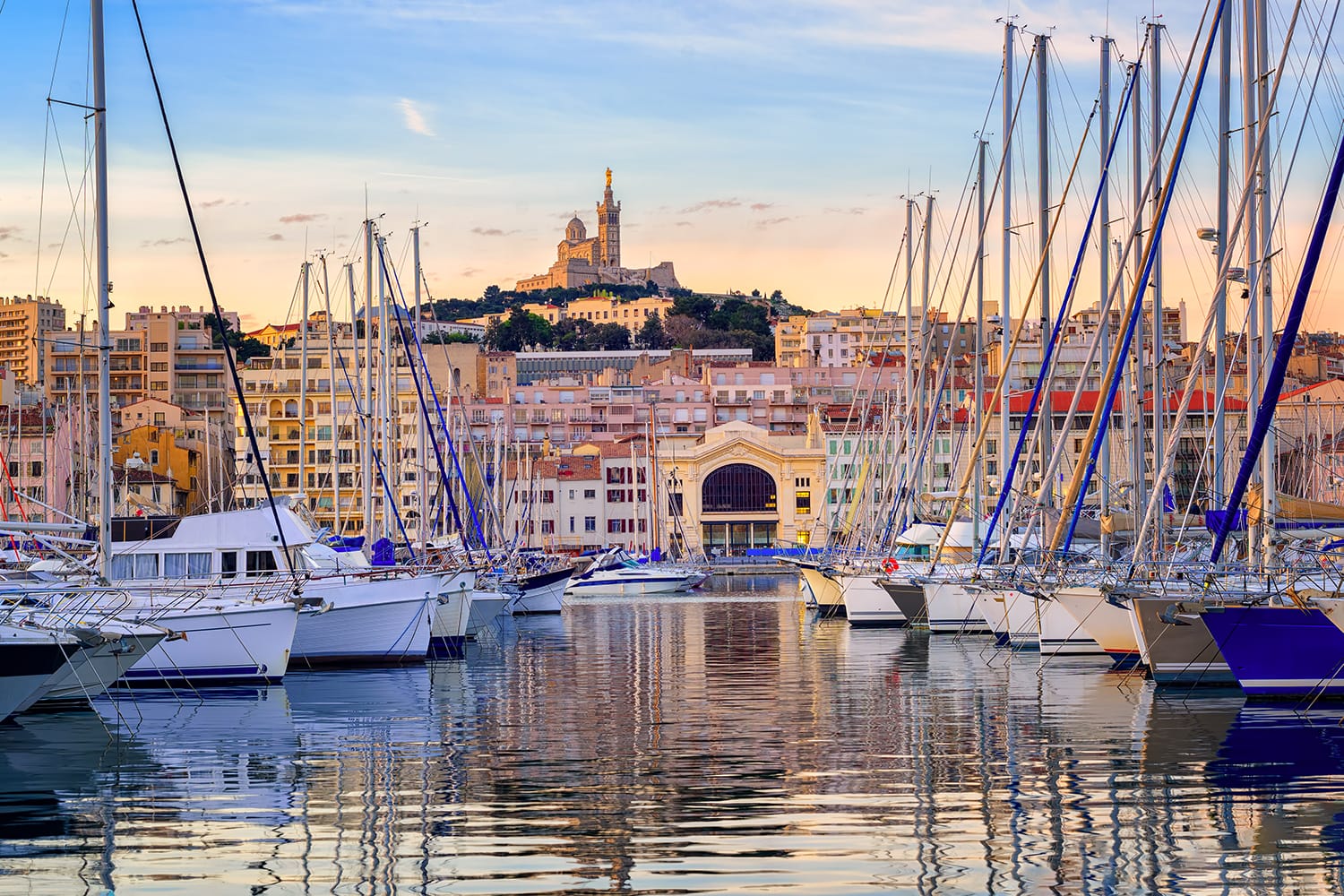
Fort Saint-Jean
Follow along the waterfront, and you’ll eventually reach your next stop, the impressive Fort Saint-Jean. To enter the fortress, you’ll need to climb up the stairs on the far side of the road and cross an elevated footbridge. Once inside, you can explore the walls and fortifications of this fort that has protected the Old Port since 1660. A nice surprise among its views and defenses is the herb gardens that have been planted in places, delighting your nose with their aromas.
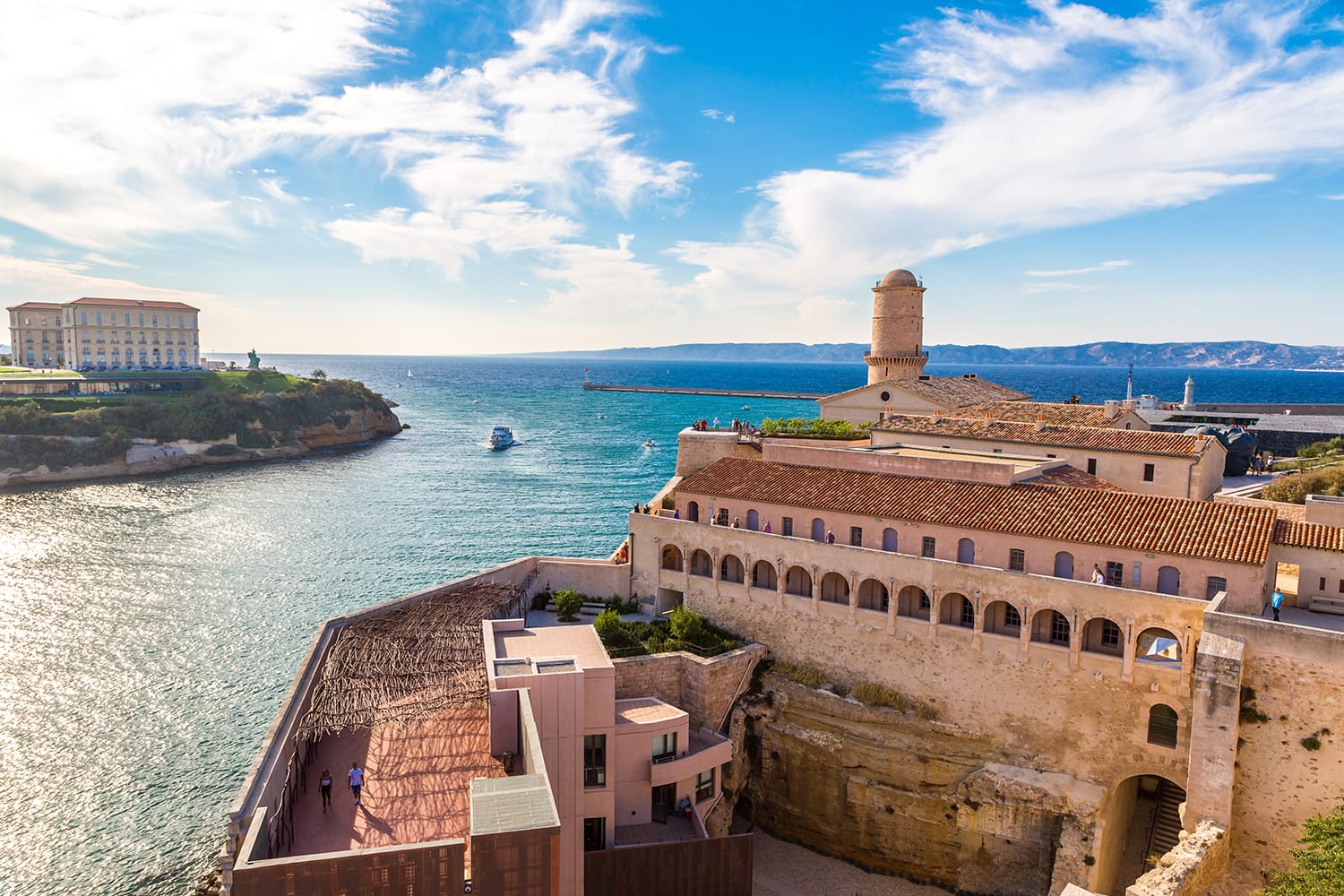
MuCEM
The other footbridge that provides access to Fort Saint-Jean leads to one of Marseille’s newest additions, the Museum of European and Mediterranean Civilizations, or MuCEM. This museum, opened in 2013, is dedicated to exploring the blending histories and cultures of civilizations that have lived around the Mediterranean. Exhibits focus on themes like trade and agriculture across different periods, including the modern era. Even if you decide not to see the exhibits, you’ll at least want to get a good look at the buildings strikingly modern architecture from the never-ending ramp that spirals around it.
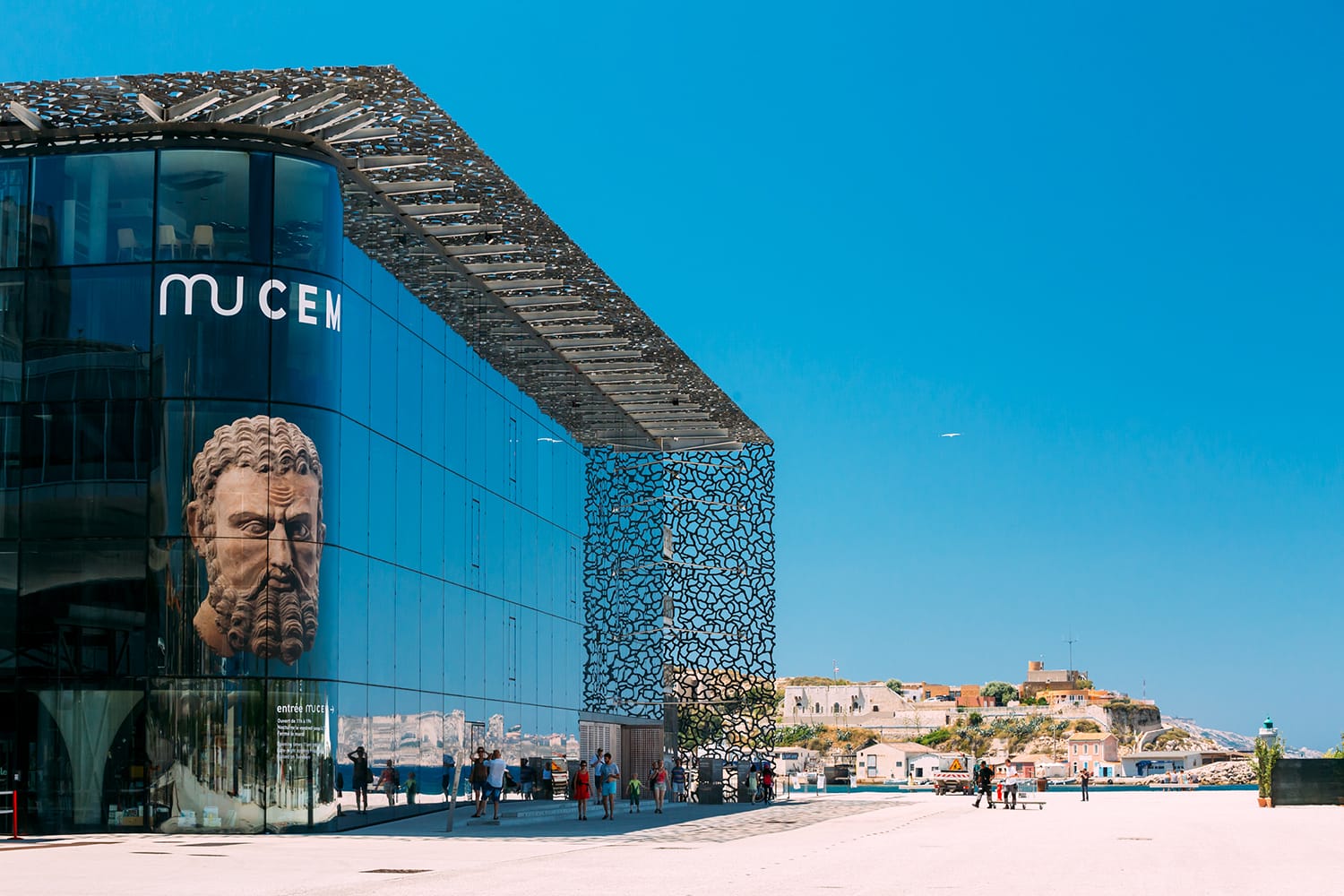
Marseille Cathedral
Just a short walk across a pleasant pedestrian promenade, you’ll find the incredible Marseille Cathedral. This deceptively modern cathedral immediately captures attention thanks to its size and unusual Byzantine architecture. While there had been a prior cathedral in the same spot from the 12th century, it was almost entirely destroyed to make way for this new cathedral, which was finished in 1896. As nice as this city emblem and national monument is from the outside, you really feel its scale once you’re inside. It’s not your average French church, so don’t miss it.
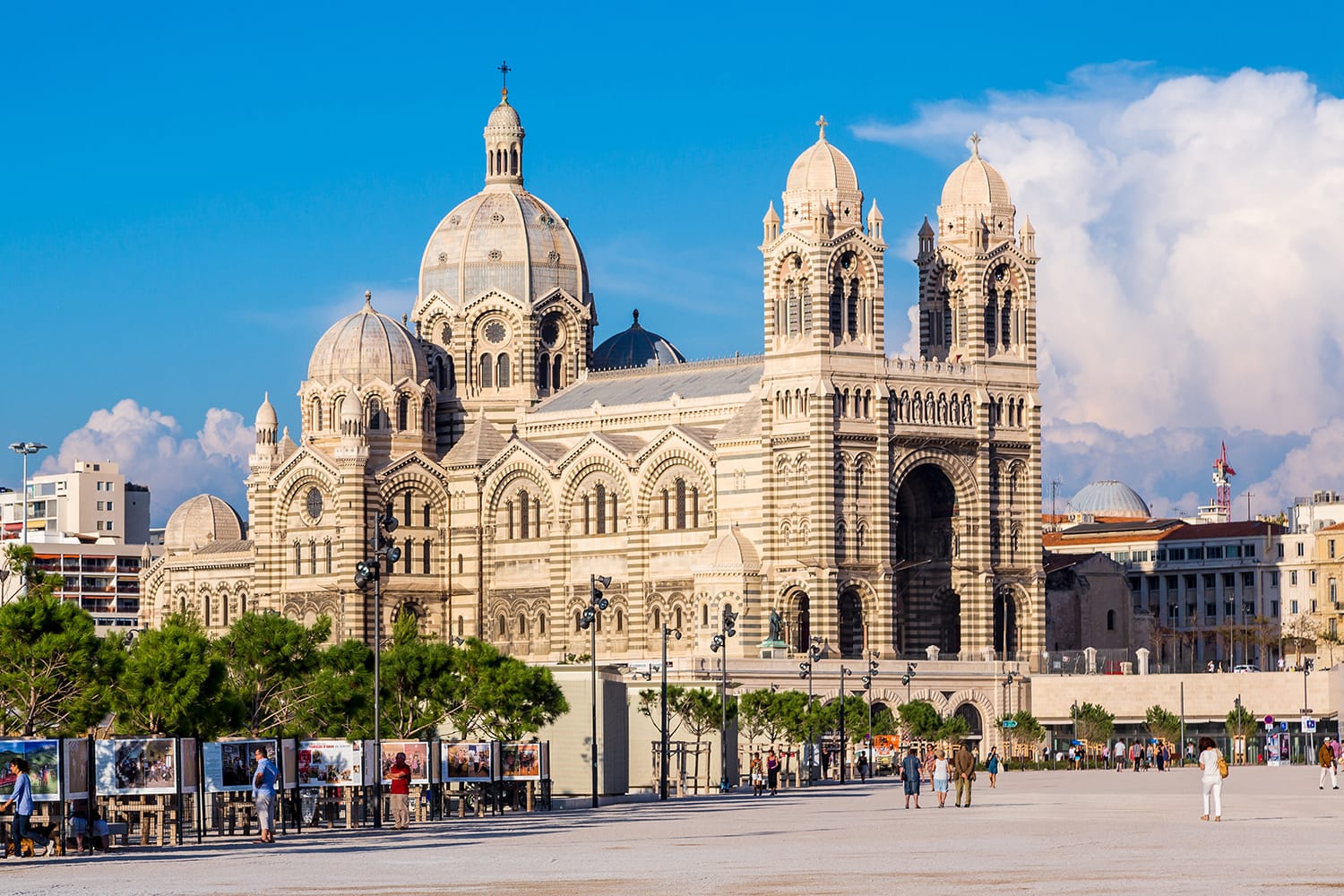
Le Panier
The residential area neighboring many of these landmarks is known as Le Panier and it’s one of the oldest parts of the city. With its position on a hill overlooking the harbor, Le Panier features plenty of steep, narrow streets, not to mention old-fashioned character. The neighborhood makes you feel like you’ve left the big city behind and found yourself in a completely different town.
The best thing about Le Panier is its extensive street art. Each street and side alley seems to have its own little gallery, encouraging you to continue exploring the neighborhood and see what treasures you can find.
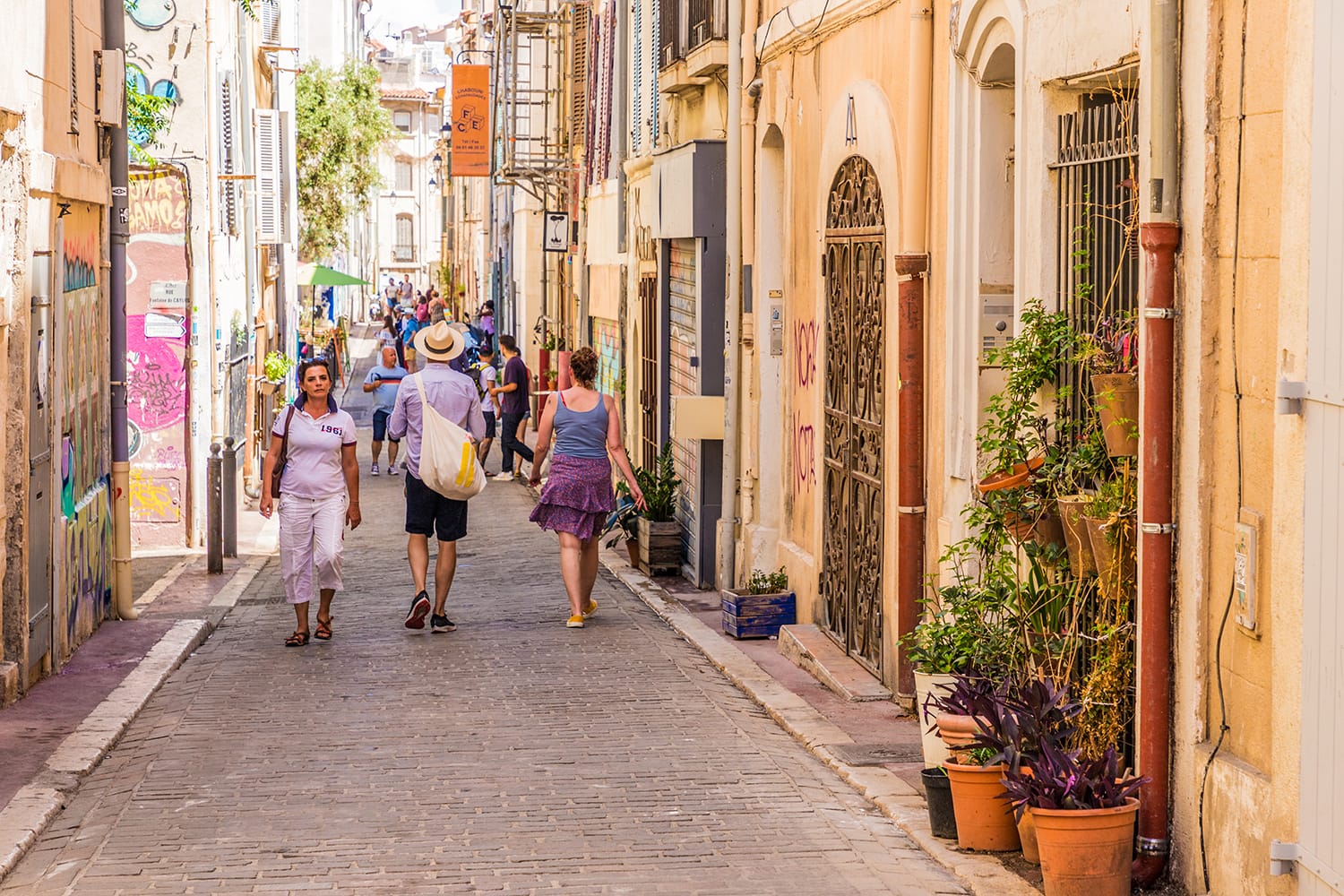
La Vieille Charité
One of the few attractions found in the residential heart of Le Panier is La Vieille Charité cultural center. Despite its rather elegant Baroque design, the 18th-century building that now hosts this museum and cultural center was originally used as an almshouse for the city’s poor. Both the Musée d’Archéologie Méditerranéenne and Musée d’Arts Africains, Océaniens et Améridiens hosted there require ticket entry, but it’s free to enter the main courtyard and admire the gallery arcades that enclose its little chapel.
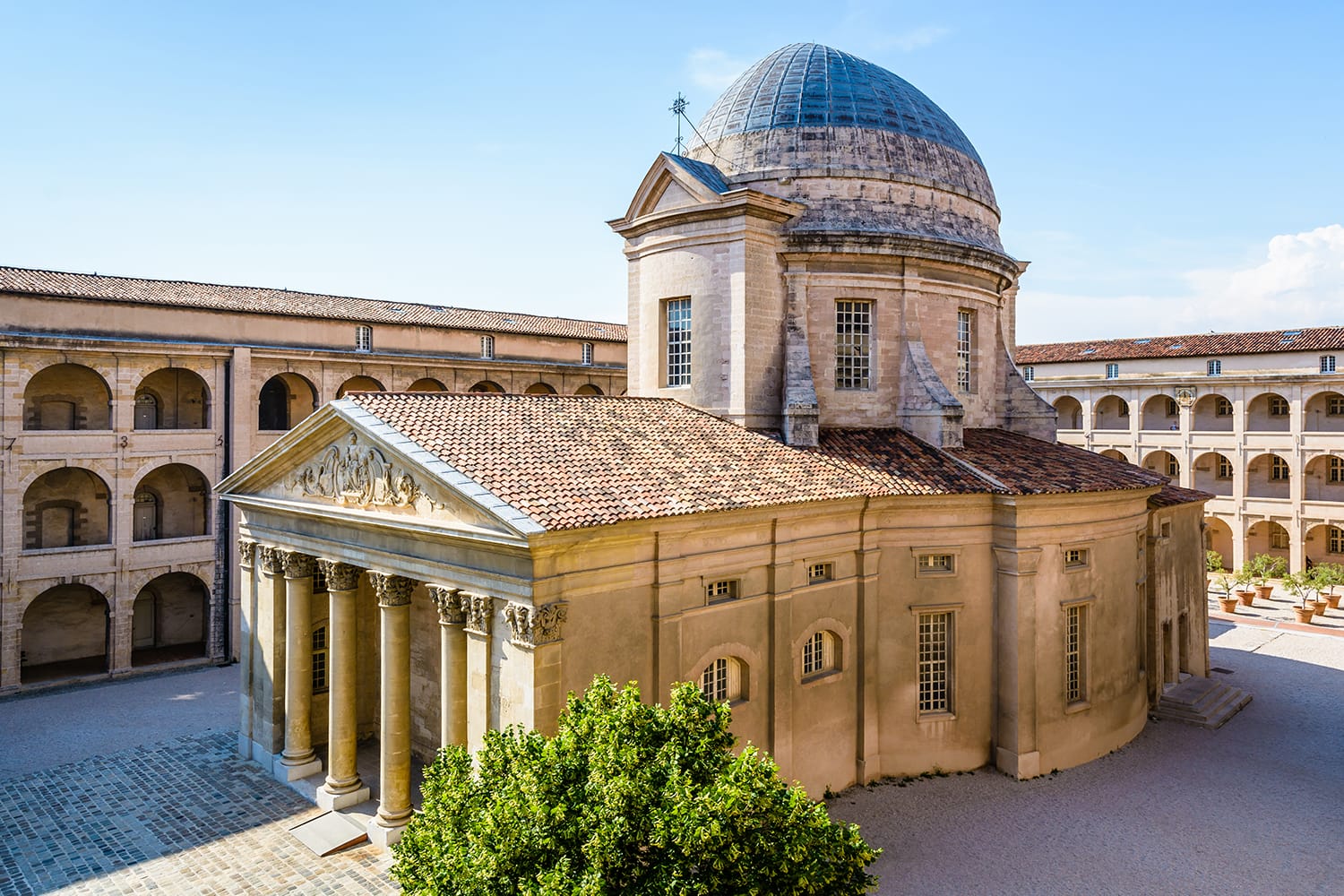
Notre-Dame de la Garde Basilica
The Notre-Dame de la Garde Basilica is located right across the city but is worth the trip to get there. Overlooking the south side of the city, high on a hilltop, stands the Notre-Dame de la Garde Basilica. This basilica is the most iconic landmark of Marseille and is visible from most places around the city. Make the journey up to reach this 19th-century basilica, and you won’t regret it.
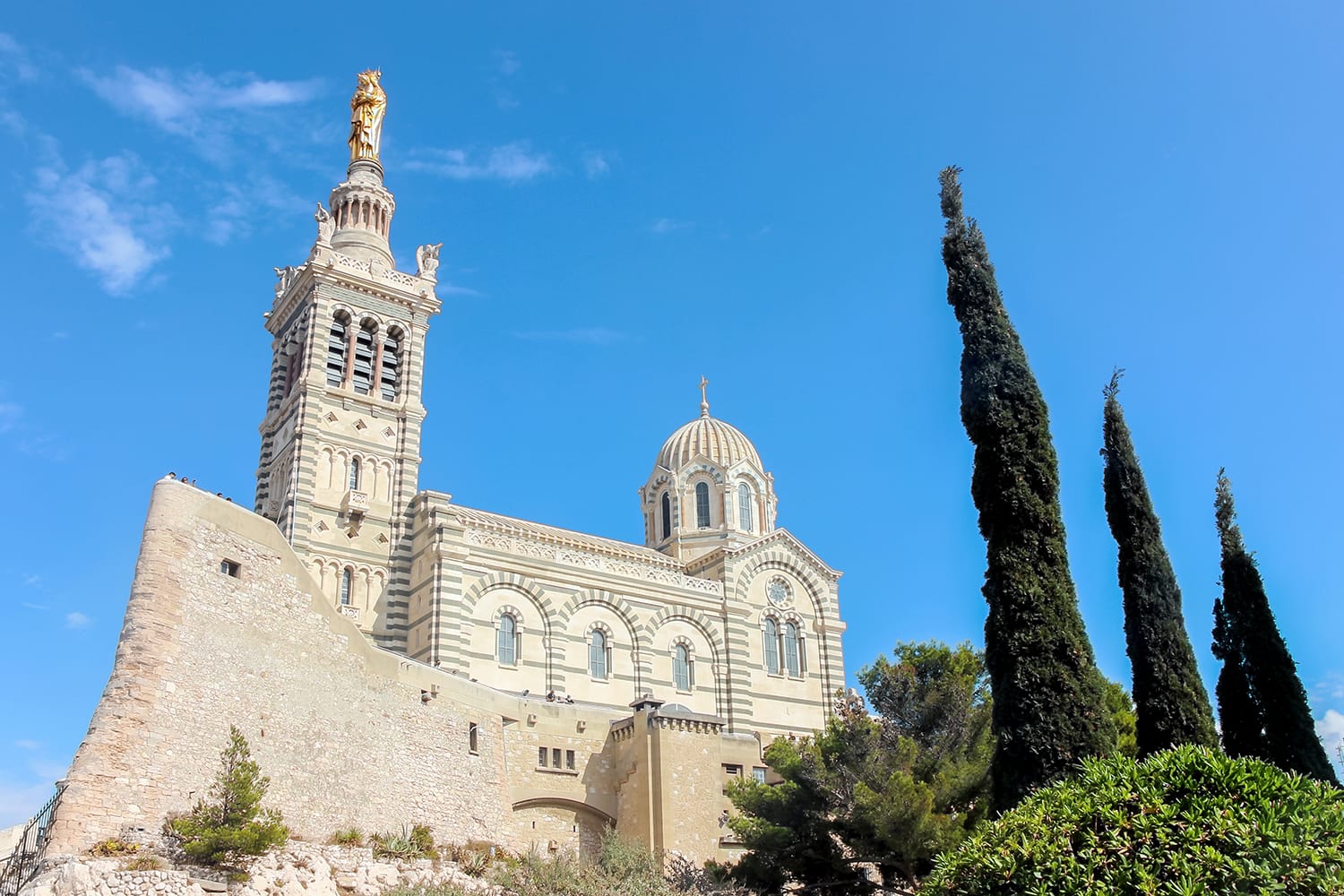
Upon arrival, you’ll immediately notice the gleaming golden statue of the Madonna and Child standing on top of its tower. The building itself has multiple levels, with a crypt carved into the rock below and a dazzling neo-Byzantine chapel above it. Best of all, you can enjoy spectacular views right across Marseille and even the Frioul Islands offshore from the viewing terraces outside.
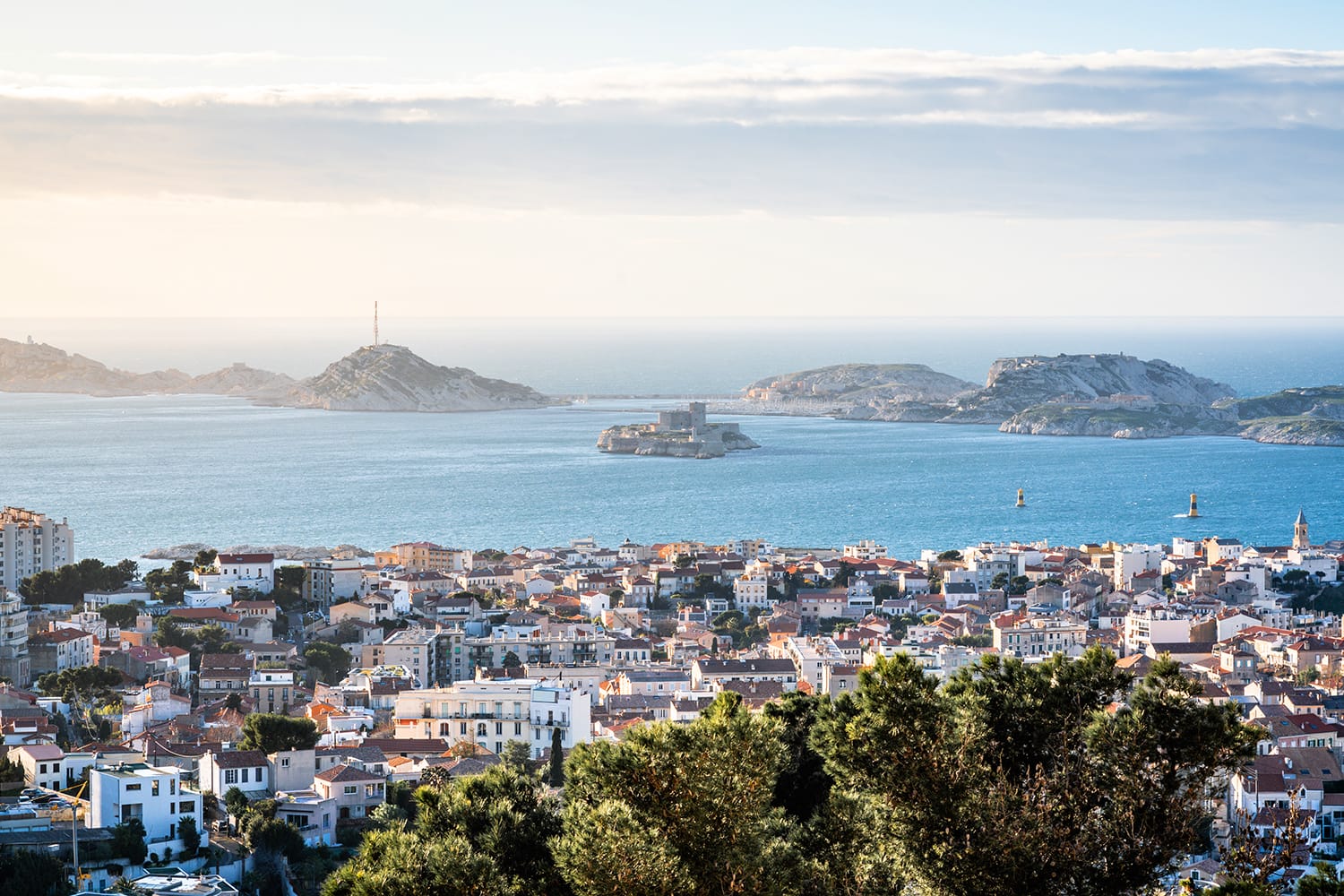
Sunset Dinner Cruise
There’s no better way to spend an evening in Marseille than enjoying a sunset dinner cruise. Sip a drink on the open-air deck while enjoying the wonderful surrounding landscape as you cruise along the coast of Marseille. As the sun goes down, anchor in a secluded cove and enjoy dinner in the cool night air. You can book your sunset dinner cruise experience here.
Marseille Itinerary: Day 2
We’ve made a good start with Marseille’s sights, but there’s still plenty more of the city to uncover. Then there’s the famous Château d’If out in the Frioul islands that you won’t want to miss.
Palais Longchamp
Start your second day with the impossibly majestic Palais Longchamp outside the city center in the fourth arrondissement. Believe it or not, this collection of fountains, staircases, and colonnades was built as a monument to celebrate the construction of the Canal de Marseille in the 19th century. And yet you would fully believe that it was once a palace for an elite local noble thanks to its terraced fountains and spectacular architecture. The buildings on either side of its main fountain, known as the Water Castle, house the Museum of Fine Arts and the Natural History Museum.
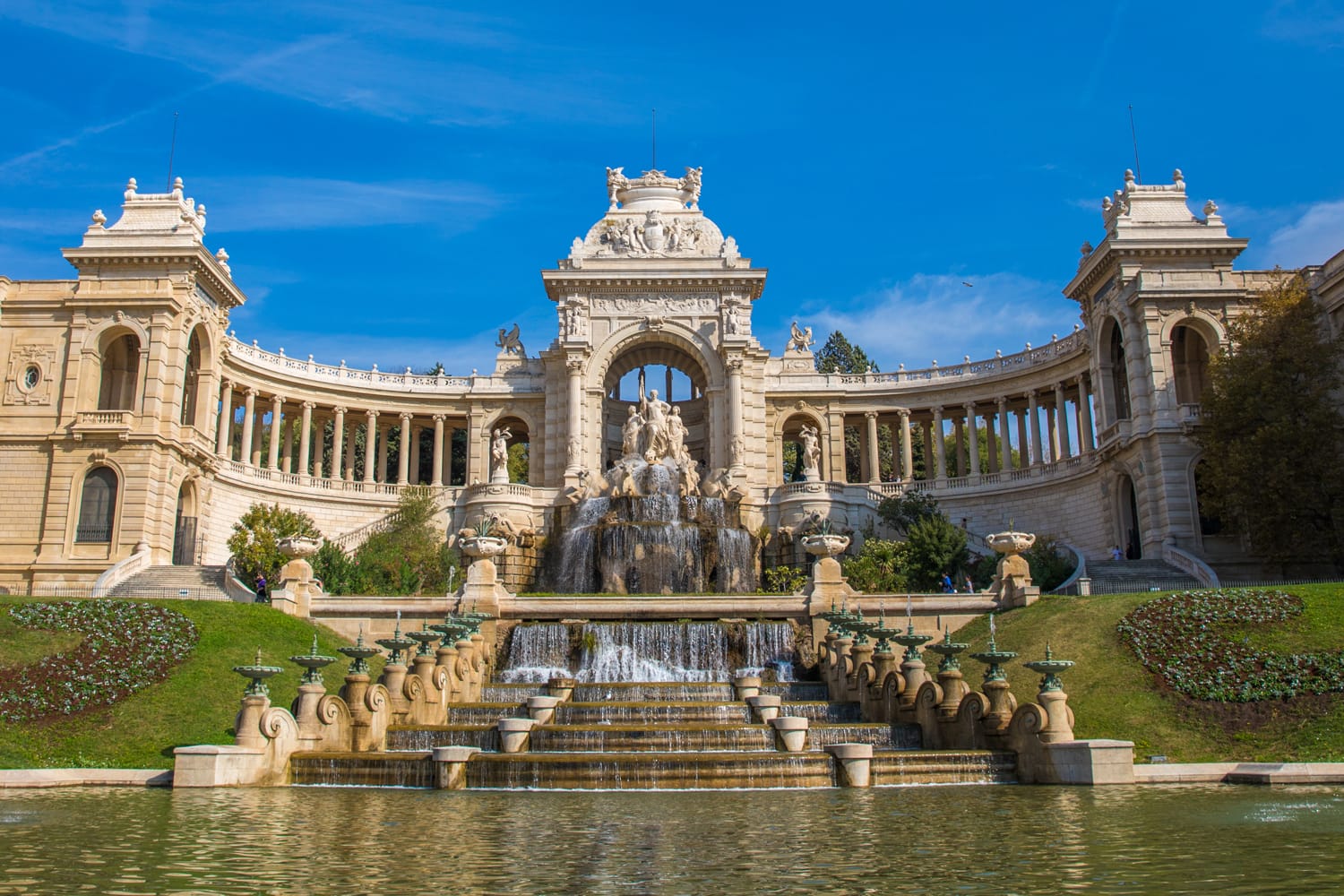
Musée des Beaux-Arts de Marseille
Since you’re already there, head inside the Palais Longchamp and get to know the fine art on display in the Musée des Beaux-Arts de Marseille. Although it wasn’t moved into Palais Longchamp until the 1860s, the Museum of Fine Arts was established in 1802, making it the city’s oldest museum. Its exhibits boast an enviable collection of paintings and sculptures created by Italian and Provençal masters from the 16th to the 19th century.
Pharo Palace Views
We now return back to the Old Port area, this time skirting the south of the harbor and making our way to the Pharo Palace. Overlooking the pleasant Émile Duclaux Park and the mouth of the Old Port, this is yet another good spot in Marseille for views. In particular, it’s a good place to look down along the Old Port and see just how imposing Fort Saint-Jean must have been to arriving ships.
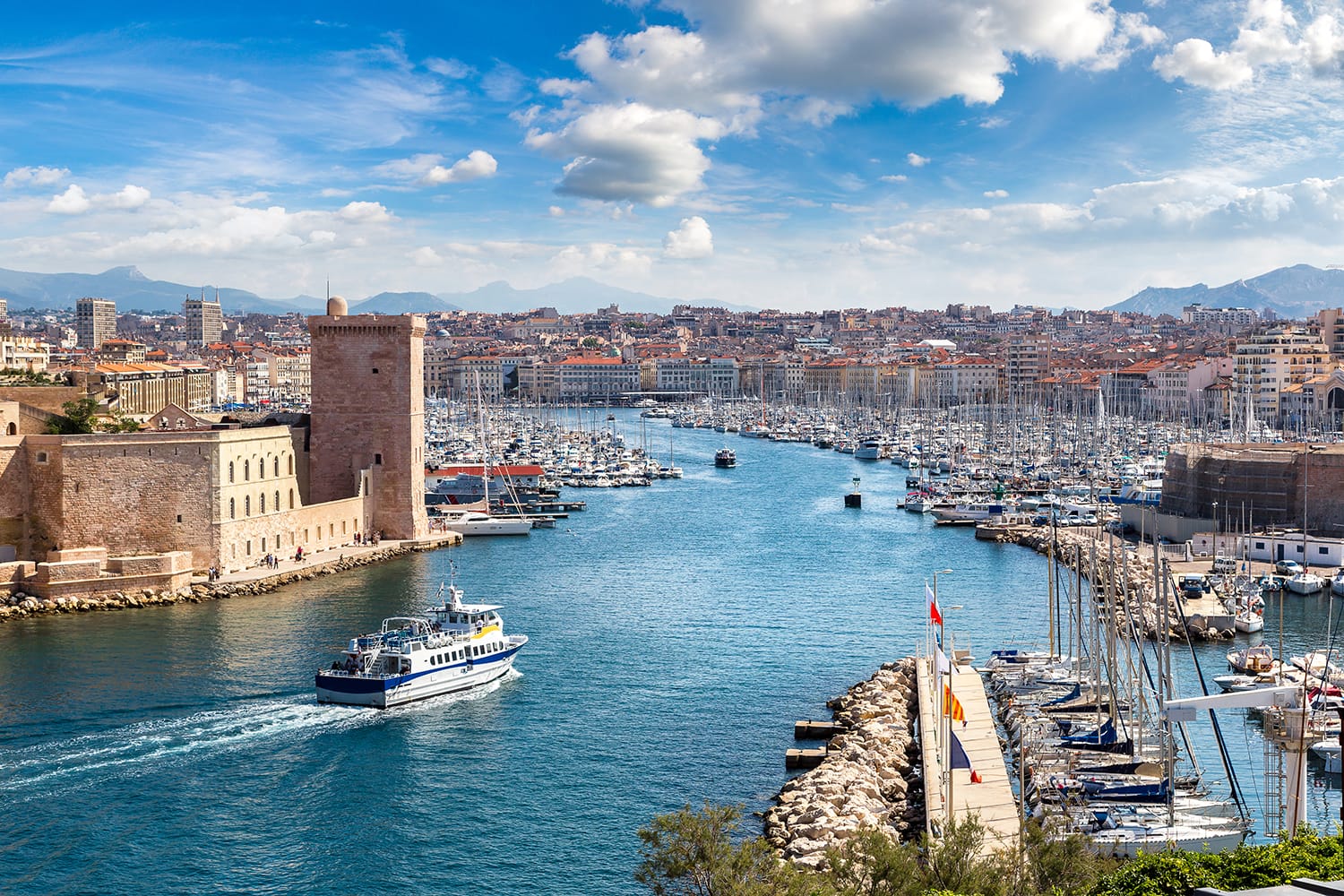
Abbey of Saint-Victor
One of the oldest landmarks in the city is the Abbey of Saint-Victor, which is an easy walk from Pharo Palace. It’s said that the abbey was founded by a hermit in the fifth century, but today only the 13th-century church stands. The remains and relics of various saints were said to have been contained within the church’s crypt at various points. Inside, you’ll find a dim, stone interior that gives you a sense of how old the building is.
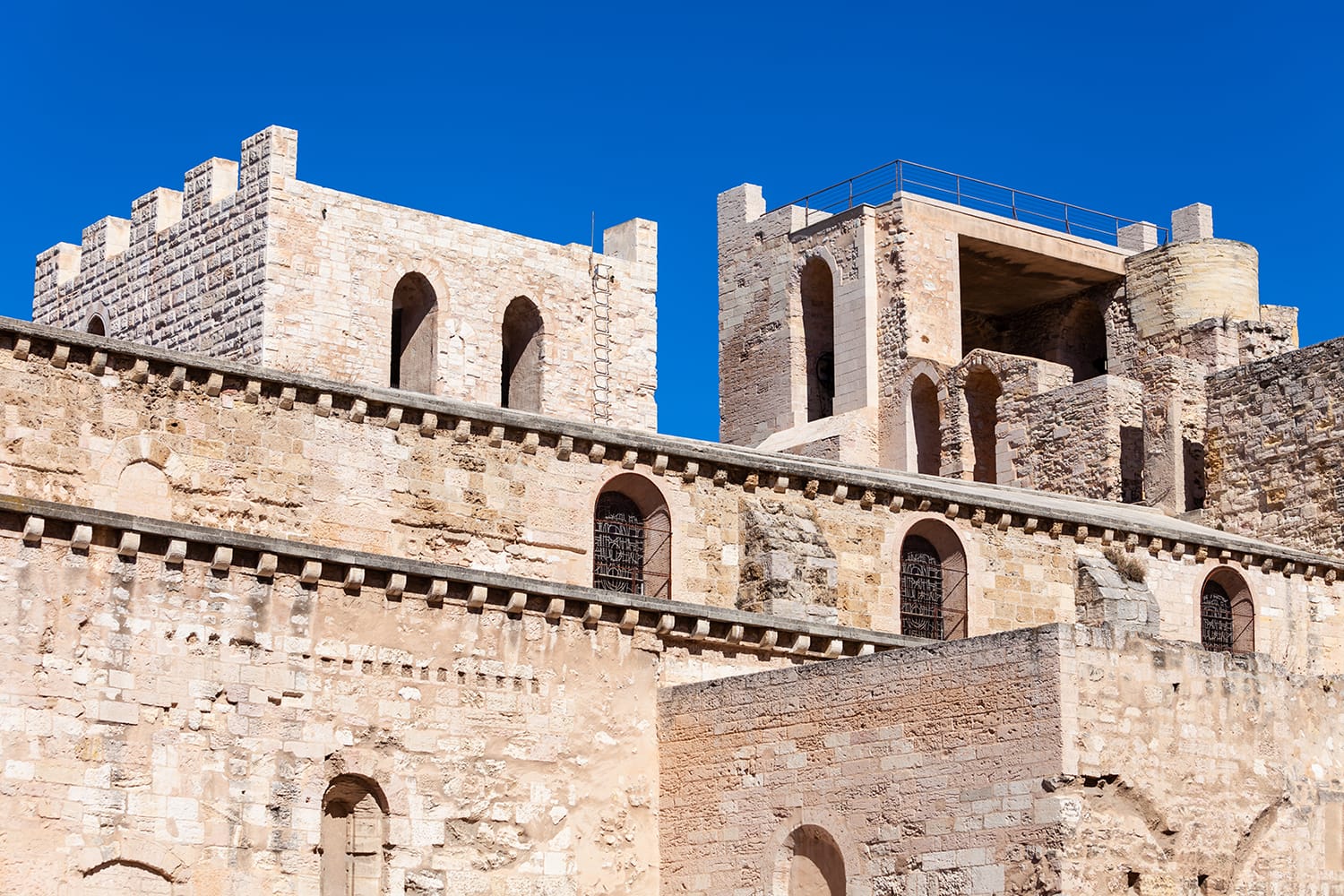
Marseille History Museum
Sticking with the city’s great sense of history, we head now to the Marseille History Museum. Opened in 1983, the museum is built around an open-air park with ruins uncovered during archaeological excavations in the ’60s that include sections of ramparts and a necropolis. Indoors, you’ll find artifacts from as far back as the Ancient Greek and Roman settlements.
Château d’If
To finish off your time in Marseille, head down to the Old Port and take a ferry out to the Château d’If in the Frioul islands. This infamous fortress is located on If, the smallest of the islands that lie just outside Marseille’s harbor. While Château d’If would be worth visiting for its picturesque island fortress alone, it’s also the setting for the classic novel The Count of Monte Cristo. It’s this fortress-turned-prison that the protagonist Edmond Dantès is falsely imprisoned in and later escapes from. In reality, though, no one is known to have escaped the prison and survived, due to its isolated location. On a visit to Château d’If, you’ll get to explore its courtyards, cells, and exhibits, not to mention enjoy the views of Marseille from its walkway.
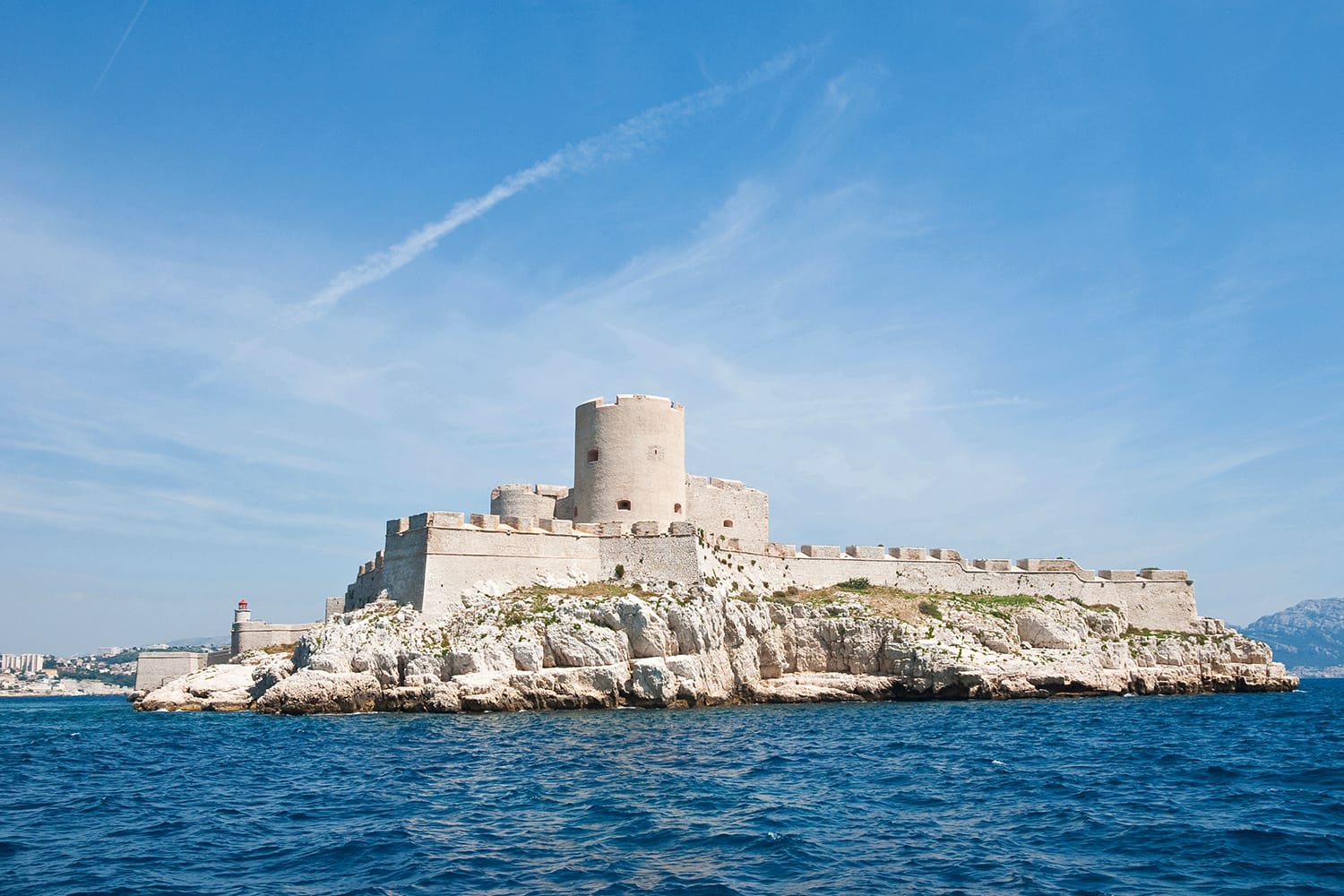
That’s the end of this guide to Marseille in 2 days. You’re now completely ready to experience this edgy yet grand city and all that it has to offer.
If you have more than 2 days in Marseille, consider taking a day trip or two. Here is our guide to the best day trips from Marseille to get you started.



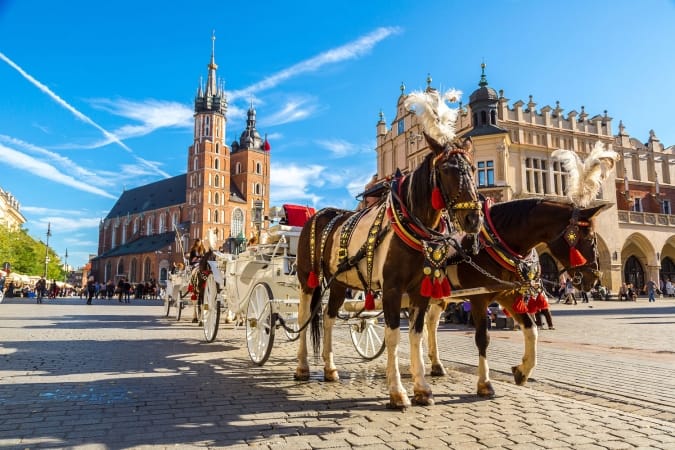
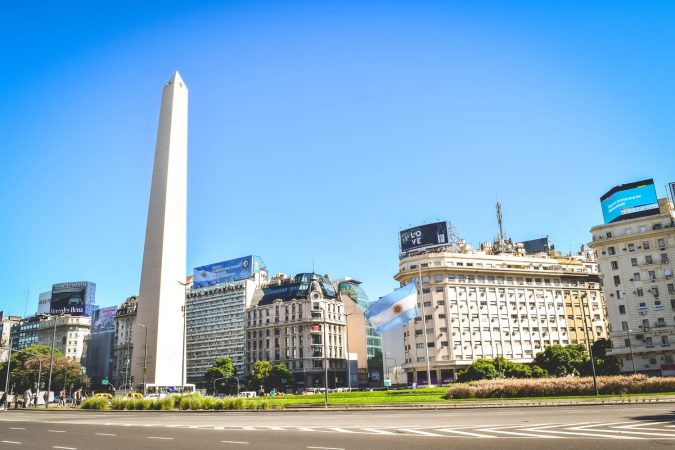



Comments